Driver managment post COVID 19 lockdown
Overview
The UK has been in lockdown since the 23rd March to stem the spread of COVID-19 with many businesses furloughing their staff. 8.7 million people (BBC News) , 1⁄4 of the working population is now furloughed meaning that many company vehicles are parked up and not driving anywhere. Almost half of the HGV fleet are parked with over 90% of the UK coaches going nowhere. Traffic levels have fallen to levels not seen since the 1970’s. As the country eases its way out of the lockdown restrictions the UK workforce will be returning to the roads. This will bring its own challenges as drivers and vehicles haven’t moved for so long.
Organisations have a legal duty to put in place suitable arrangements to manage health and safety and this includes the act of driving for work. Companies should take a pragmatic approach to this and should be part of the everyday process of running an organisation and part of good management generally. With the increased risk of company drivers returning to the roads after an extended break companies should identify this increased risk to their business and manage it effectively.
The Management of Health and Safety at Work Regulations 1999 require you to manage health and safety effectively and carry out an assessment of the risks to the health and safety of your employees, while they are at work, and to other people who may be affected by your organisation’s work activities.
Driver competency
As with any practical skill practice makes perfect and skill fade can occur over time. Having not driven a vehicle for a while many drivers will not be as competent as they were before lockdown, with dips in their overall awareness, hazard perception and practical driving skills. They have not been out honing their driving skills and so for some will find returning to the wheel a daunting experience.
We are being encouraged to move away from public transport and use alternative forms of transport instead. This will see an increase in the number of vulnerable road users sharing the road space with an ever increasing amount of traffic. The most common accident cause reported to the police is failing to look properly (DfT Reported Road Casualties Great Britain: 2019 Annual Report) which with the increase in cyclists and pedestrians will see an increase in these types of incidents.
Many companies number one incident by quantity is reversing and manoeuvring. In normal times this practical skill is practiced every day by commercial drivers up and down the country. With many drivers furloughed and vehicles standing idle this skill is being lost, so when the drivers return it will take a few days to get back to the skill levels they had previously resulting in an increased risk for companies.
Hazard perception and overall awareness of our surroundings are an important part of our driving skill. Experienced drivers are in a state of unconscious competency with these skills being second nature without really having to give them a great deal of thought. Over the next few weeks drivers should move back a step and become consciously competent in their driving to ensure they are identifying the dangers and risks they should be. Identifying ourselves as a risk is the first step of managing this risk.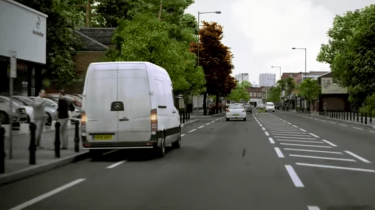
With the increased risk of companies sending out their drivers post lockdown a company can provide the following quick solutions to reduce risk and assist drivers to stay safe.
- Toolbox talk identifying the increase risk and offering solutions
- Hazards awareness and safe driving presentation to heighten overall awareness
- Driving simulator session to hone skills both practical and awareness skills prior to going back on the road
- Encourage running commentary
Toolbox Talk = a short informal group discussion that focuses on a particular safety issue.
Vehicle condition
As drivers we have a responsibility to ensure the vehicles we drive are in a safe and fit condition for use. Companies also have a responsibility to maintain their fleets and ensure they are fit for purpose. Vehicles will deteriorate over time if not used and maintained so drivers and companies should be increasing their checks to manage this risk. An increased cleaning routine should also occur to ensure the vehicles are free from contaminants and increase infection control.
A thorough check of the vehicle should be completed prior to use. There are many acronyms around to remind drivers of the checks required but I find POWDER works for me.
- Petrol / Fuel - Ideally the fuel tank should be kept full during lockdown so moisture cannot accumulate within the tank causing rust spots.
- Oil - Maintaining the correct oil level is essential to prevent your engine from seizing up and breaking down. Ensure it is at the correct level prior to starting the vehicle and any small leak may have drained the reserve.
- Water – This includes both washer fluid and coolant levels. With regards the washer fluid as with any water left for a while bacteria can grow in it. Use good quality washer fluid and wash the windscreen using the washers prior to moving to ensure all the pipes are clear of debris. The coolant (anti freeze) is there to stop the engine from freezing up in the winter but also cools the engine, lubricates the water pump and helps to reduce corrosion within the engine components.
- Damage - Check the vehicle for any damage sustained while parked, including wiper blades condition. This can include build-up of sap from overhead trees and the inevitable bird droppings. Handbrakes can also seize on too after prolonged period of non-use. Ensure the brakes are also tested at slow speed for the first time to remove any residual rusting on the discs.
- Electrics – Prior to checking lights and other electrical items do ensure the engine will start as battery failure is common for vehicles left for a long time. Once you are sure there is enough battery charge left check all of the lights are in working order - they are not only essential for you; they are also essential for other drivers to understand how you are driving your vehicle and how you intend to manoeuvre. Prior to driving also ensure Windows, fan, door mirrors etc. are working correctly as electric switches can build up a residue over time.
- Rubber - It is a legal requirement that each of your tyres has a minimum tread depth of 1.6mm (1.0mm for motorcycles, and vehicles over 3.5t) and that the tyres are not damaged in any way. Visually check both walls of each tyre to make sure there are no cracks starting to form due to lack of use. Check tyre pressures are correct as natural seepage of air is common even when your vehicle is standing still. Driving with underinflated or overinflated tyres can adversely affect your braking distance, steering, fuel efficiency and lifetime of your tyres. Vehicles left for several weeks can also develop ‘flat spots’. This is where the tyre forms a flat area that is on the road or driveway which in turn can cause a vibration when driving, but will normally reduce over time.
Companies should provide advice through toolbox talks, social media posts and fact sheets to ensure all their drivers are aware of these enhanced initial vehicle checks especially after the vehicle has been standing idle for so long.
Compliance paperwork
After a period of lockdown it is easy to assume that our paperwork and legal documentation is still in date and valid. There are several documents that are required to be in place for both driver and the vehicle.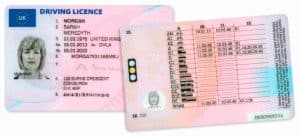
For the driver this will include:
- Driving licence – Is the licence still valid for the categories of vehicle the driver is expected to drive. With the increasing reports of speeding offences during lockdown has there been a change in the number of points attributed to the drivers licence.
- Medical changes – Eyesight for example deteriorates slowly over time in most people so a quick check to ensure drivers can still meet the legal requirements is recommended. Any relevant changes to a driver’s medical history should also be evaluated to ensure it will not affect their ability to drive safely.
- Driver CPC and Tacho cards – These should be checked if relevant to ensure drivers are still up to date and have valid cards prior to driving again. The government have temporarily changed the rules so that drivers whose Driver CPC card expires in the period from 1 March 2020 to 30 September 2020 can continue driving. (gov.uk/guidance/coronavirus-covid-19-temporary-changes-to-driver-cpc-requirements)
For the vehicle this will include:
- MOT and servicing schedules – Is the Mot and servicing schedules up to date and valid for the vehicle to return to the road. The government have temporarily changed the rules so that if your car, van or motorcycle’s MOT expiry date will be extended by 6 months if it’s due on or after 30 March 2020. ([gov.uk/guidance/coronavirus-covid-19-mots-for-cars-vans-and-motorcycles-due-from-30-march-2020]())
- Road tax – Ensure the vehicle still has a valid road tax in place. If the vehicle has been put on SORN for the duration of lockdown do ensure it is taken off this prior to being driven on the road.
- Insurance validity – Companies and some drivers have changed their insurance requirements during lockdown so do ensure these are changed back prior to returning to the road.
- Tolls permits roads, bridges, congestion charge – Many tolls and parking restrictions have been removed for the duration of lockdown so do ensure you are aware of when these return and that direct payments authorities are still in place.
Conclusion
During this period of uncertainty it is easy to forget the basics and overlook the changes in risk levels that affect us as drivers. By managing this risk effectively we can ensure the transition back to work is as smooth as possible. With effective measures in place we can all share the roads safely going forward and reduce the risk of accident and incident in this time when the NHS has enough to do.
Both personal PPE and changes to the vehicles should be considered but with careful consideration to ensure the driver is not hindered while operating the vehicle. The wearing of facemasks for example could increase fogging on the drivers glasses reducing vision.
By using effective communication to drivers and managers these messages can be shared. Toolbox talks, workshops and effective communication through social media and other channels will all help to reinforce the messaging.
Driver training is always a good way of ensuring drivers are upskilled in the techniques they require but with social distancing measures in place this makes on road training difficult. Other effective training measures can be used while complying with social distancing regulations including low speed manoeuvring courses which can be trained from outside the vehicle.
New Technologies such as Virtual Reality and driving simulators can assist with this requirement. Both have the options of maintaining social distancing and being effective in developing a driver’s hazard awareness and practical skills in a realistic and safe environment. With so much change in the world today embracing new ways of working will ensure companies can meet the challenges they face over the coming months and years.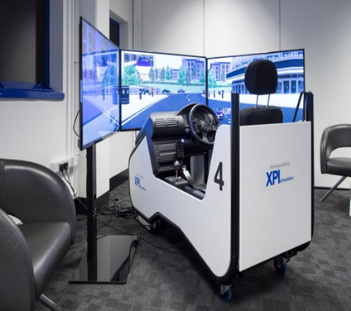
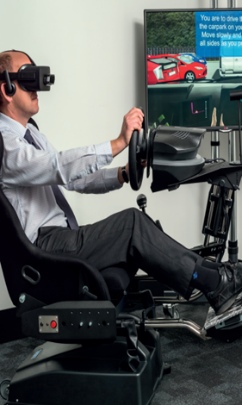
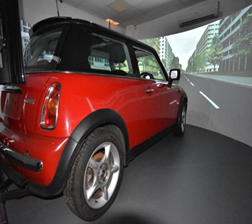
More News
Get in Touch
Ask an XPI Simulation expert to help using our simple form. We understand that each customer has different budget and performance requirements, so we work with our customers to offer a complete range of systems that are fully scalable and flexible to meet their specific needs.


